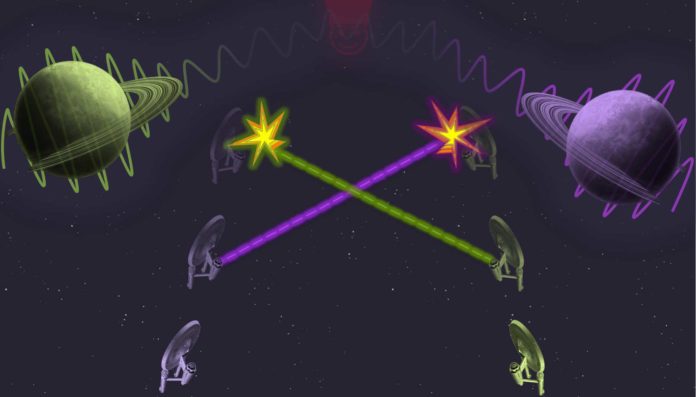Time has a diverse character in quantum mechanics and general relativity. In quantum theory, events occur in a fixed order, while in general, temporal relativity order is impacted by the dispersion of matter.
When matter requires a quantum description, temporal order is expected to become non-classical—a scenario beyond the scope of current theories. An international team of researchers led by physicists from the University of Vienna, the Austrian Academy of Sciences, the University of Queensland (AUS), and the Stevens Institute of Technology (USA) has provided a direct description of such a scenario.
In a new study, scientists combined the key elements of the two theories depicting the progression of time and found that temporal order between events can show certain quantum features. As per general relativity, the presence of a massive object hinders the progress of time. This implies a clock placed near a massive object will run slower when contrasted with an identical one that is further away.
Be that as it may, the rules of quantum theory allow for any object to be set up in a superposition state. A superposition state of two locations is different from placing an object in one or another position randomly – it is another way for a purpose to exist, permitted by the laws of quantum physics.
But, what happens when an object massive enough to influence the flow of time is placed in a quantum superposition state?
Besides being a controversial topic, some scientists think that such scenarios are fundamentally impossible- some new mechanism must block the superposition from forming first, while others develop entire theories based on the assumption that this is possible.
During the study, scientists were expecting to face the roadblocks making the scenario impossible, but shockingly, using standard reading textbook physics, they had the option to precisely portray what happens.
They thus discovered that when a massive object is placed in a quantum superposition in the vicinity of a set of clocks, their time order can become truly quantum, opposing any old-style depiction.
Caslav Brukner, coauthor from the University of Vienna and the Austrian Academy of Sciences said, “The regime where quantum time order could arise is quite remote from our everyday experience, but the most important insight from our work is that quantum time order is at all possible and that it results in new physical effects.”
“To illustrate what happens, imagine a pair of starships training for a mission. They are asked to fire at each other at a specified time, and immediately start their engines in order to dodge each other’s attack. If either of the ships fires too early, it will destroy the other, and this establishes an unmistakable time order between the firing events. If a powerful agent could place a sufficiently massive object, say a planet, closer to one ship it would slow down it’s counting of time. As a result, the ship farther away from the mass will fire too early for the first one to escape.”
The study shows that the temporal order among events can display superposition and entanglement – really quantum features of specific significance for testing quantum theory against choices. The outcome would now be able to be utilized as an open proving ground for frameworks for quantum gravity, and therefore help to push forward in defining the correct theory of quantum gravity.
The study will also be relevant for future quantum technologies. Quantum computers that exploit the quantum order of performing operations might beat devices that operate using only fixed sequences. Practical implementations of quantum temporal order do not require extreme conditions—such as planets in superposition—and can be simulated without the use of gravity. The discovery of quantum properties of time can lead to better quantum devices in the upcoming era of quantum computers.
Journal Reference
- Zych, M., Costa, F., Pikovski, I. et al. Bell’s theorem for temporal order. Nat Commun 10, 3772 (2019). DOI: 10.1038/s41467-019-11579-x
